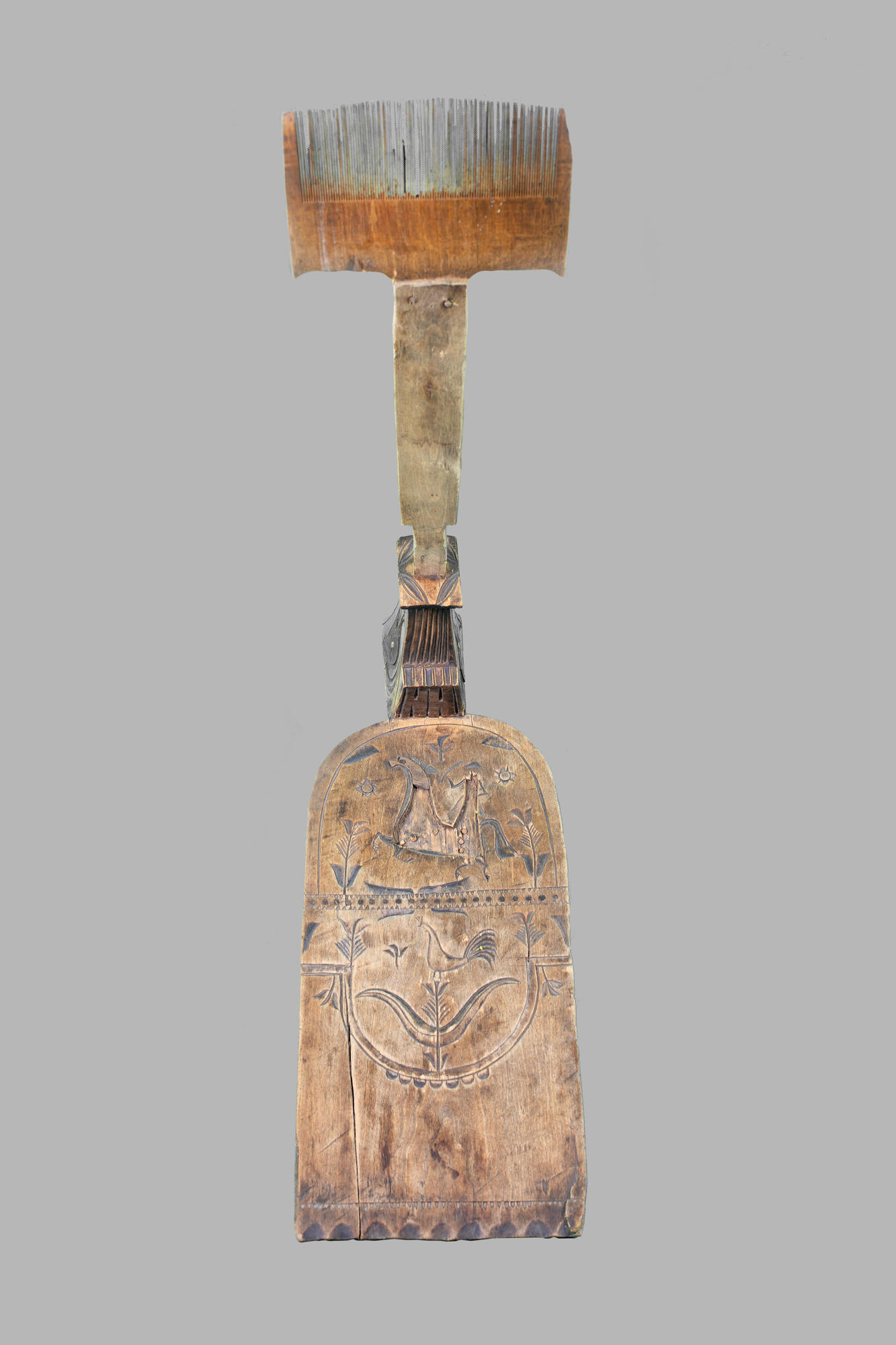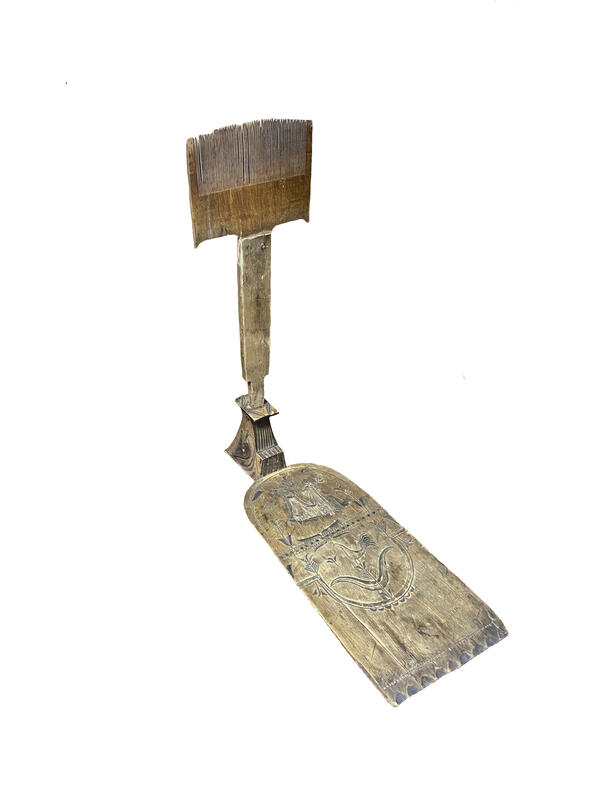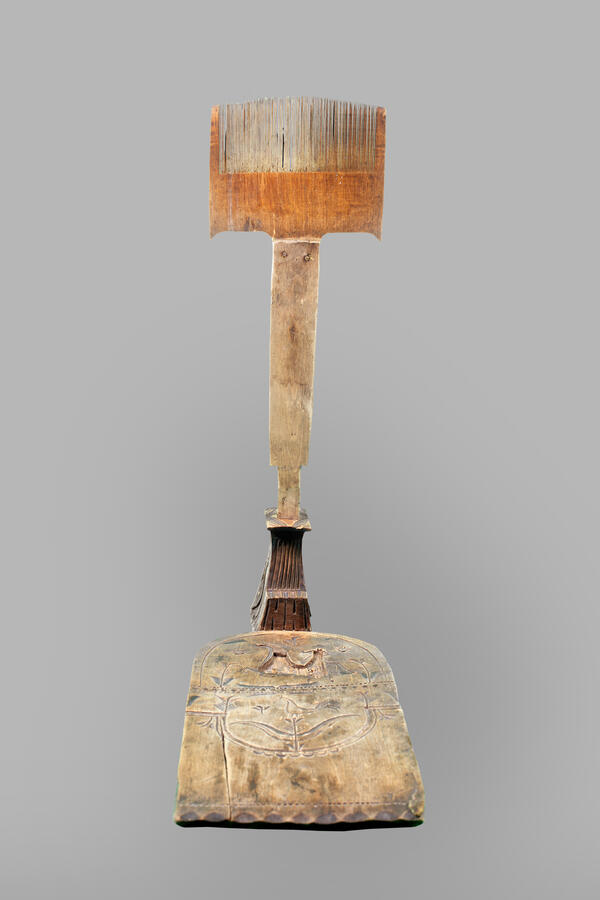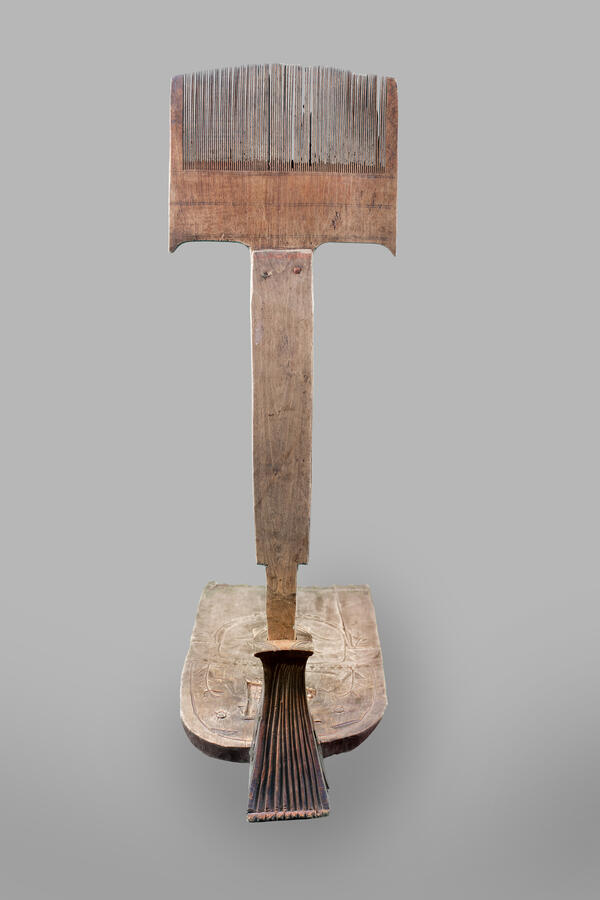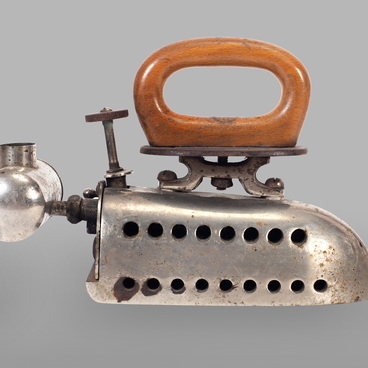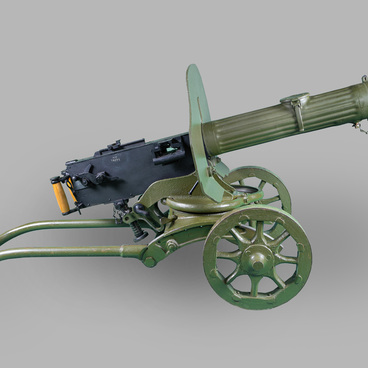Spinning is one of the oldest human occupations, emerging in the Neolithic Era, about 10,000 years ago. It is the process of twisting fibers, often cotton, linen or wool, to produce thread. The thread of human destiny was metaphorically spun by the goddesses of pagan, Greek, Roman and Scandinavian mythology. The first spinners twisted the thread on their thighs or between the palms of their hands. The spindle — a spinning tool — appeared as early as in prehistoric society and is still in use today.
In Rus, women spun for five months of the year, from late fall until spring, when there was no field work. It was hard toil by the light of a rushlight or candle. Every household had a distaff; it was given to girls when they were born and for their weddings. Many beliefs and traditions were associated with distaffs. For example, on Christmas holidays it was put in the closet so that the spirits would not spit on it, and on Shrovetide women used them to slide down an ice chute. The one who got the farthest would have the longest flax fiber.
There were two types of spinning tools: a spinning wheel and a distaff. Distaffs with a blade — also called “head”, “face”, or “feather” — could be made from a solid piece of pine or spruce with a rootstock (kornevische), so such spinners were called “kornevukhi”. Spinning wheels were not equipped with a pedal to turn the wheel until the 16th century — before that, women had spun it by hand.
Distaffs could also be assembled and consisted of a comb and a bottom, which was otherwise called a “goozno” or “podgoozok”. “On the aspen I sit, through the maple I look, and the birch I shake” — this old Russian riddle about a distaff describes the kinds of wood it was made of. Aspen or linden was used for the bottoms, maple — for the comb, and birch — for the spindle.
Distaff bottoms were often decorated with carvings, inlays, and painting. Flowers and birds, brave riders, girls at work and free horses were depicted on them. The bottoms were hung on the wall as decorations the family was proud of. All men in the family knew how to make a distaff. The father or elder sons used an axe to hollow out the form and chisel out the head — the stand for the comb. Younger sons planed the surface of the bottom with a jointer. The wife and younger children glued the heads on the bottoms.
In Rus, women spun for five months of the year, from late fall until spring, when there was no field work. It was hard toil by the light of a rushlight or candle. Every household had a distaff; it was given to girls when they were born and for their weddings. Many beliefs and traditions were associated with distaffs. For example, on Christmas holidays it was put in the closet so that the spirits would not spit on it, and on Shrovetide women used them to slide down an ice chute. The one who got the farthest would have the longest flax fiber.
There were two types of spinning tools: a spinning wheel and a distaff. Distaffs with a blade — also called “head”, “face”, or “feather” — could be made from a solid piece of pine or spruce with a rootstock (kornevische), so such spinners were called “kornevukhi”. Spinning wheels were not equipped with a pedal to turn the wheel until the 16th century — before that, women had spun it by hand.
Distaffs could also be assembled and consisted of a comb and a bottom, which was otherwise called a “goozno” or “podgoozok”. “On the aspen I sit, through the maple I look, and the birch I shake” — this old Russian riddle about a distaff describes the kinds of wood it was made of. Aspen or linden was used for the bottoms, maple — for the comb, and birch — for the spindle.
Distaff bottoms were often decorated with carvings, inlays, and painting. Flowers and birds, brave riders, girls at work and free horses were depicted on them. The bottoms were hung on the wall as decorations the family was proud of. All men in the family knew how to make a distaff. The father or elder sons used an axe to hollow out the form and chisel out the head — the stand for the comb. Younger sons planed the surface of the bottom with a jointer. The wife and younger children glued the heads on the bottoms.
